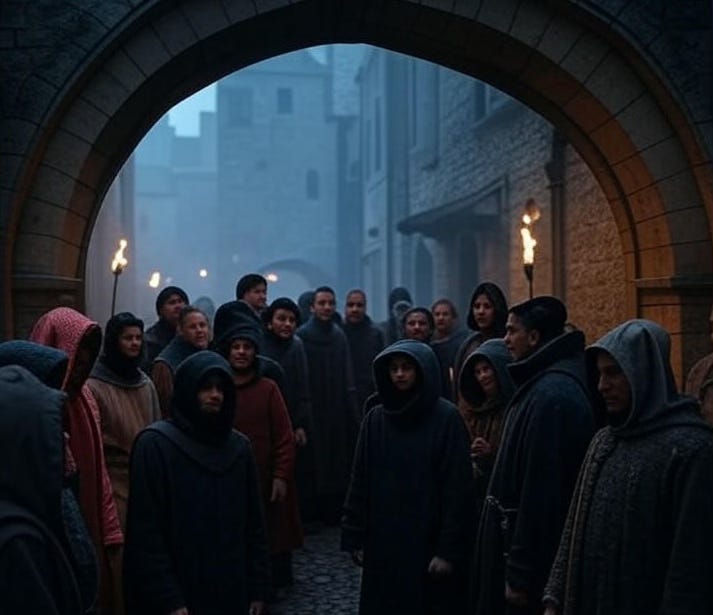Forming associations in France before the 20th century was tightly controlled by legal decree under the ruling monarch or head of state. This system served to suppress dissent, sedition, and unauthorized organizing, as those caught forming unsanctioned groups had no legal defense for their act of association.
The way around this was with a 12th century invention out of France and England, called lettres patentes, or letters patent1 [1]. If you sucessfully petitioned the state to allow your group to legally exist, you would be granted a public document2. Non-compliance fell under the purview of the local bailliff and seneschal3 or - in the case of the republic - the bureaucratic apparatus formed by a prefecture, prosecutor and criminal court.
In the absence of judicial process, the king could issue lettres de cachet, signed personally and not subject to court oversight [2]. These kinds of documents fell under two types: administrative, which were absolute orders to stop group assembly; and punative, used to imprison, confine, or expel individuals from the realm.
Letters patent grew out of post-Roman bureaucracy, preserved and spread by the papacy. Royal and, later, civil chanceries - charged with handling official documents - adapted these legal instruments for the medieval period.
The opposite of letters patent were ‘letters close’ - the kind often seen in popular media - where a “for your eyes only” document is delivered to an individual of import, sealed to confirm its official and private nature [3].
The Law of 1901
As shown above, before the 20th century, no general right to associate existed in France. Associations weren’t outright illegal, but they required government authorization, which was rarely granted. The Association loi de 1901, or Law of 1901, effectively ended that system by granting automatic legal status to associations of two or more people, as long as they followed the rules [4]. There were only three requirements: a contractual agreement, the pooling of knowledge or activity without seeking profit, and a selfless purpose.
Legit profit-making businesses formed a société, or company, which were ipso jure part of the legal structure. But a not-for-profit entity, let’s say a political group, cultural club, or charity, required the loi 1901 structure to operate.
There is a loophole of sorts, or rather more of an anomoly, that sideskirts the Law of 1901 and is therefore disconnected from the linear evolution of French law. The Alsace-Moselle association law allows for simpler association formation on a narrower, more local level, as long as the entity is formed in one of the departments of the Alsace-Moselle region [5]. Just like how Llívia, a Spanish exclave in southern France, retains its native identity outside the mainland, Alsace-Moselle preserves a unique legal framework within France, grandfathered in when the region was under German rule.
Conclusion
Anomolies aside, medieval ordinances for the exercising of professions in France were often regulated under letters patent [6] and were historical precursors to the Law of 1901. In fact, the law was a turning point. Instead of needing special, top-down permission, people could finally form groups by default, without royal permission or any legal gymnastics required. What used to be a privilege became a basic right, opening the door to everything from sports clubs to political movements.
Sources
1 - Letters patent (Wiki)
2 - Lettres de cachet (Wiki)
3 - Letters close (Wiki)
4 - Association loi de 1901 (Wiki)
5 - Association de droit local alsacien-mosellan (Wiki)
6 - Liste des ordonnances médiévales touchant aux métiers (Wiki)
the term patent is one that the English would eventually borrow, with the meaning of granting rights over an invention
the literal meaning of lettres patentes
the king’s judicial and administrative representatives in a region, north and south, respectively.




